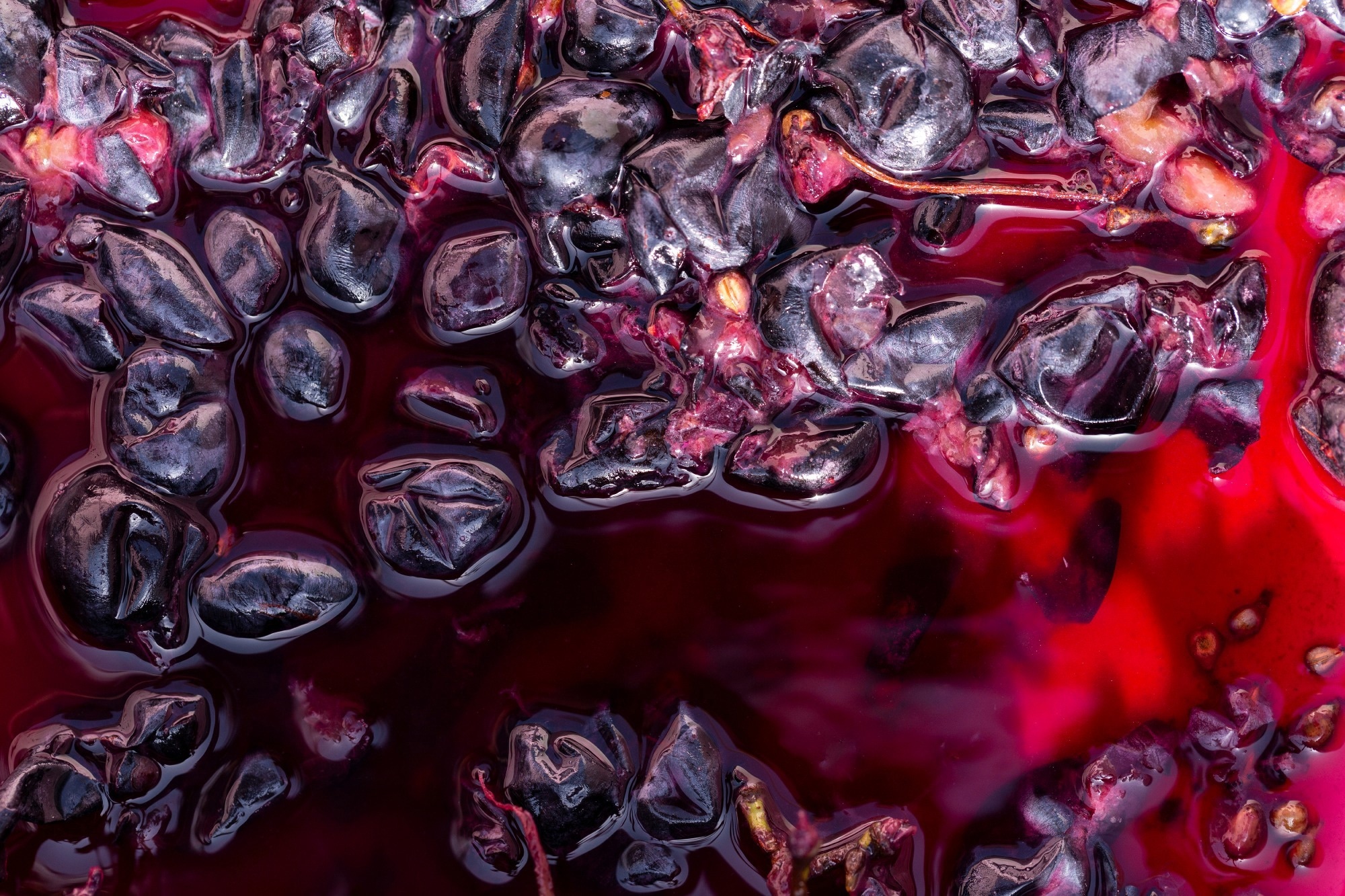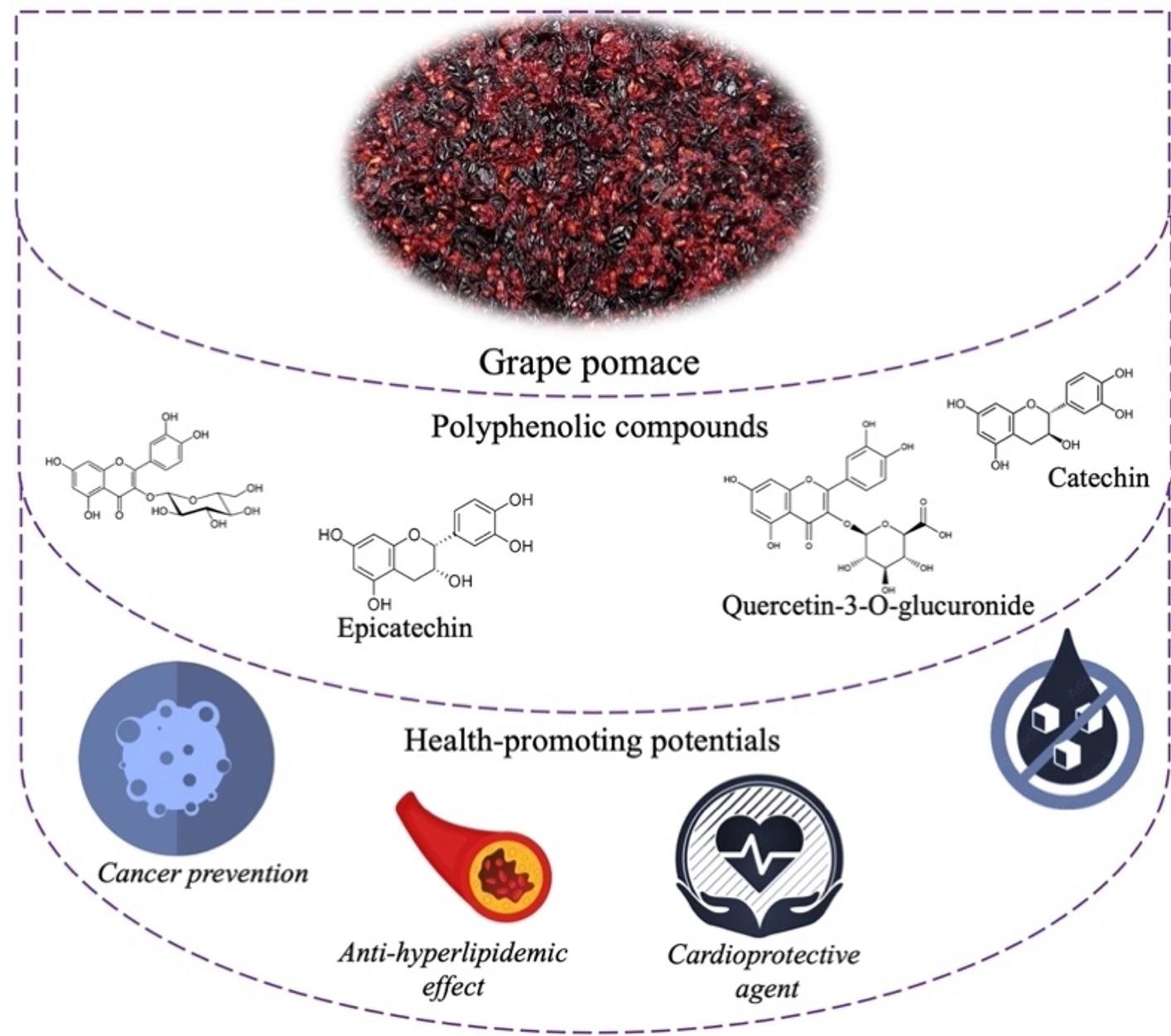In a recent article published in the journal Foods, researchers conducted a comprehensive review and synthesized advances in research on the bioactive properties, health and nutritional benefits, and food system applications of wine by-product grape pomace (GP). Their conclusions have important applications for the sustainable development of the wine industry and the reduction of winery waste.
Winemaking is one of the largest agro-industries in the world, generating large amounts of by-products and waste, of which GP forms a significant part, representing nearly one-fourth of the weight of the processed grapes. Scientists believe that the compounds in GP have antitumor, antioxidant, antimicrobial, and anti-aging properties, which could be used to develop new food products and reduce waste from the wine industry.
Food waste not only represents inefficiencies and economic costs in the supply chain but also has severe environmental consequences. Under the Sustainable Development Goals, international bodies have targeted reducing food waste and promoting a more sustainable, efficient circular economy.
 Study: Grape Pomace—Advances in Its Bioactivity, Health Benefits, and Food Applications. Image Credit: Piotr Velixar / Shutterstock
Study: Grape Pomace—Advances in Its Bioactivity, Health Benefits, and Food Applications. Image Credit: Piotr Velixar / Shutterstock
GP contains beneficial bioactive compounds
Based on the number of aromatic rings in the structure, GP contains three types of polyphenols, namely phenolic acids like hydroxybenzoic acids, flavonoids like anthoxanthins and anthocyanins, and nonflavonoids like tannings and stilbenes.
Using environmentally friendly and naturally sourced solvents like ethanol, glycerol, and water and optimizing traditional extraction techniques have made extracting bioactive polyphenols from GP easier. The fibers, grape seed oil, and polyphenol extract can be used in the food and cosmetic industries.
GP and other by-products can be added to industrial formulations; adding grape flour into food products promotes antioxidant activity and can improve probiotic survival in enriched yogurts. Beyond nutrition, polyphenols have cosmetic applications such as protection from damage caused by ultraviolet radiation.

Graphical Abstract
These polyphenols have demonstrated health benefits
GP polyphenols appear to have anticancer properties, with some studies finding that extracts successfully slow the growth of human breast and lung carcinomas, murine melanomas, colon cancers, and metastatic melanomas. However, further studies are needed in in vivo systems.
These bioactive compounds also confer cardioprotective benefits through better vasorelaxation and modified lipid profiles. This appears to be mediated by anti-platelet activities, which do not differ across grape varieties but are affected by the choice of extraction solvent. Oligomeric and monomeric flavan-3-ols are particularly effective at aggregating platelets.
Quercetin-3-O-glucuronide, catechin, and peonidin-3-O-acetyl glucoside successfully inhibit the action of digestive enzymes that cause carbohydrate degradation, which has implications for diabetes management. However, the multifactorial nature of diabetes necessitates further research into these applications.
The anti-hyperlipidemic properties of GP have also been assessed using in vivo models, with findings suggesting that GP supplementation can improve plasma lipid profiles and reduce total blood triglycerides in hamsters and rats. These benefits are thought to occur because the polyphenolic compounds increase the metabolism of fatty acids, inhibit plasma secretions, reduce intestinal dietary fat absorption, and reduce apolipoprotein B secretion while increasing beta-oxidation.
Applications in the food industry
Research indicates that GP supplementation promotes antioxidant activity, while cakes supplemented with GP powder have more lipids, anthocyanins, ash, dietary fiber, and polyphenols than wheat flour cakes. Similar effects have been noted in GP-enriched bread, black tea, and milk chocolate.
Introducing GP into common foods could improve their shelf life. They can also inhibit the activity of harmful bacteria such as Escherichia coli, Bacillus cereus, Staphylococcus aureus, Salmonella typhimurium, and Candida albicans while promoting the probiotic activities of beneficial bacteria such as Bifidobacterium animalis and Lactobacillus acidophilus.
Another application of GP is in manufacturing baked goods and beverages, where they have been found to heighten sensorial characteristics while enhancing nutritional value. Some characteristics of GP-enhanced foods are the purple color, increased acidity, and reduced sweetness. Products in which GP has been tested include bread, chocolate, and meat products.
However, the amount of GP and the type of product must be considered to ensure palatability and optimal taste and texture. For example, consumers may find a small addition of GP more visually attractive.
Conclusions
Promoting GP has implications for food sustainability, with wide-ranging applications in the food and cosmetic industries. GP polyphenols can be used in the treatment of hypertension, diabetes, cancer, aging, neurogenerative diseases, and obesity and can be used to develop novel food and cosmetic products.
However, significant advancements have been limited to a few countries, namely the United States and China, as evidenced by the patents granted for bioactive food products, animal feed, and novel methods of extraction and preparation. Further research is needed in the field of GP-enriched foods, with pilot-scale studies and economic evaluations to assess commercial viability.
Journal reference:
- Grape pomace – advances in its bioactivity, health benefits, and food applications. Almanza-Oliveros, A., Bautista-Hernandez, I., Castro-Lopez, C., Aguilar-Zarate, P., Meza-Carranco, Z., Rojas, R., Michel, M.R., Martinez-Avila, G.C.G. Foods (2024). DOI: 10.3390/foods13040580, https://www.mdpi.com/2304-8158/13/4/580